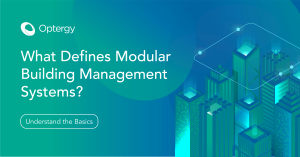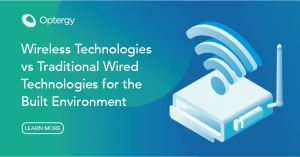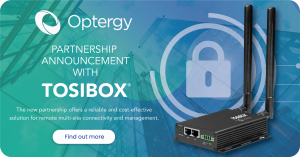What is an IoT Edge Device?
Organised data for easy interpretation
With the rise of cloud computing and the increase of internet-connected devices, having IoT edge devices on-site has become an essential component of the IoT architecture.
What is a building industry IoT edge device?
Building Management Systems (BMS) are essential for keeping your facility running comfortably and efficiently. They do so by creating a unified coordination of operations with a centralised interface. This gives you the power to monitor and regulate mechanical and electrical operations like HVAC, security and more for the health and safety of your occupants.
As technology evolves at an increasingly rapid rate, BMS systems are requiring more advanced technology to process and store data which operators need to manage their facilities more efficiently. Occupants are also requiring more data as their desire for interactivity with IoT devices grows.
This is where an edge device comes in.

Imagine trying to process and store all the data from your BMS onto the cloud. The cost could be high for storing information, which would be more efficient and cost-effective to be stored and processed on-site. Why migrate something to the cloud if it doesn’t need to be on the cloud?
Simply put, an IoT edge device in the building industry, is responsible for holding onto an asset’s data. It can transfer data to other building systems (for example BACnet devices) and also allows its information to be accessed by other IoT devices via a REST API. It keeps the data localised, and only sends specific pieces of information to the cloud when it’s needed.
Processing the high volumes of data, whilst allowing for easy accessibility and interpretation, via both building systems and IoT devices, allows for a higher value proposition solution, both within the building environment and cloud services.
How does it work?
Most building controller devices collect data relating to the building’s systems like HVAC, hydraulic systems, central plants, and VRF as well as energy, water and gas monitoring. The edge device allows you to hold onto data without going through BACnet to retrieve it. An advanced Smart Edge device will give you direct access via an API (Application Program Interface) to any other IoT edge device. An API acts as a link between an interface and software data.
With a built-in API on the IoT edge device, instead of sending information to the cloud, the API allows you to access data from any device within the building network, through your phone, laptop or tablet. You fully control what data you access and how often it updates. It gives you the chance to quickly obtain data for a more effective solution. If you’re on the building precinct, why should you have to go to the cloud when you can summarise the data on-site?
Why is an IoT edge device so important in today’s building industry?
The most important function of the IoT edge device is that it can lower costs by reducing the need to send high volumes of data to the cloud, which can be very expensive and disorderly.
The value of an edge device also comes from the organisation and accessibility it creates for the end-user. The function of an IoT edge device is that not only does it share data with a cloud-type service, but it can also send data to other types of edge devices within its proximity. It creates more intelligent data management, localised to the devices that benefit from holding the data.
The IoT edge device is a component that allows you to filter data while keeping the information on site, and minimising the cost of the data migration to a cloud service. It reduces the saturation of data not only in the cloud but also on hard drives on-site.
IoT edge devices give you the flexibility you need to access and organise data on the fly. It simplifies and enhances the processing of information, so you can generate fast and effective solutions. If you want to find out more about how you can utilise a smart IoT edge device to optimise your building, click here to learn more.



